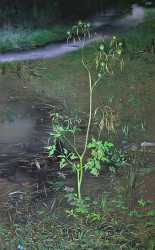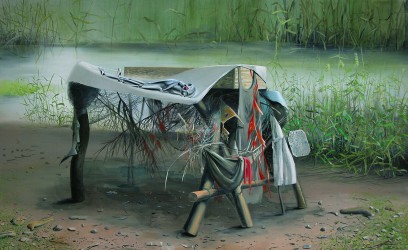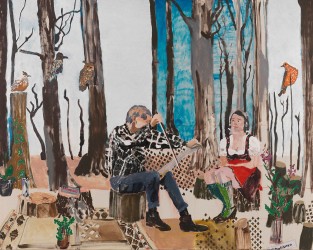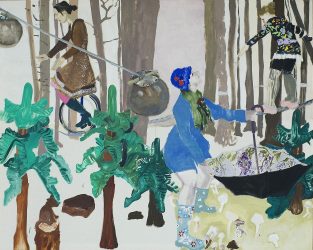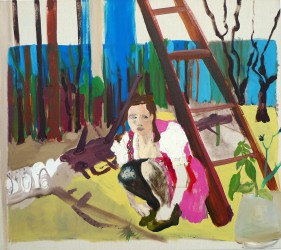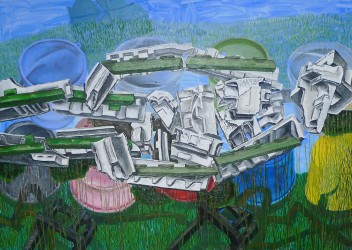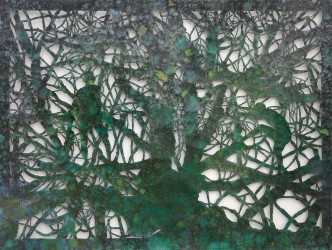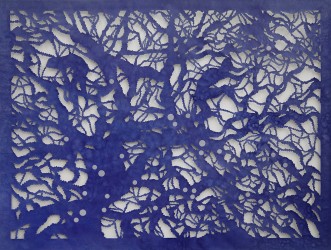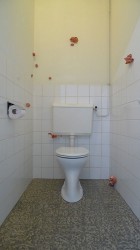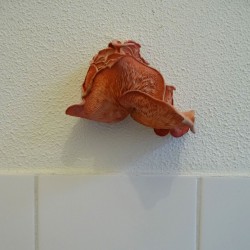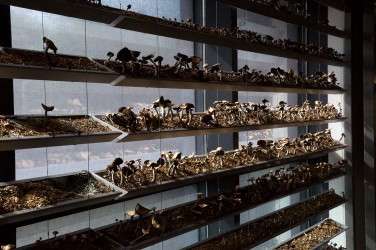Human Nature
Andrea Freckmann, Olphaert den Otter
Urs Pfannenmüller, Ed Pien
cut out drawings, paintings
17 March – 14 April 2013
At the Gemeentemuseum Den Haag March 15th the manifestation Yes Naturally starts, in which artists and designers investigate the changing relationships between man and nature. Zeger Reyers (1966) will show a new work with mushrooms titled A Glance Through the Shades. (see: ja-natuurlijk.com) Parallel to Yes Naturally Galerie Maurits van de Laar organizes the exhibition Human Nature which focuses on both man’s perception of nature and nature’s influence on man.
These two perspectives overlap in Olphaert den Otter’s (1955) painting Flash, featuring Jimson weed, a strongly hallucinogenic plant capable of conjuring up extremely realistic delusions. Also shown are a number of paintings from the Homemade-series dedicated to man-made huts and temporary shelters that will inevitably fall to ruin before being absorbed by nature again.
Andrea Freckmann (1970) paints stage-like spaces in which she depicts people in forests or parks. As if he were a music-making Orpheus, a man is playing a musical saw while birds and a girl in a Dirndl dress listen to him. This peculiar scene raises a number of questions. Are we indoors or outdoors, has this forest been painted or it is real and are we looking at actors or ‘ordinary’ people?
In his paintings, Urs Pfannenmüller (1942) depicts garbage as pieces of polystyrene foam and buckets lying in the grass. On closer inspection these objects resemble bodies or faces. Like a reversed Arcimboldo, the human shape is not made up of fruit, but of artificial materials. Because of their angular forms and white colour the polystyrene foam makes these figures resemble skeletons that can be regarded as contemporary Memento Mori’s.
In Ed Pien’s (1958) cut-out drawings the metamorphosis is again contradictory to this. The human form is absorbed in a labyrinth of branches in which arms and legs merge with the tree. Ed Pien, who is of Chinese descent, is often inspired by Asian folklore and fairy tales in which the forest and metamorphoses, from human into animal or plant, play an important role.
Zeger Reyers has made an installation with funguses in the restroom of the gallery. Years ago he grew mushrooms in the airshaft above the toilet of Center for Contemporary Art Witte de With in Rotterdam. The installation is typical for Zeger Reyers´s work in which he introduces nature into man made environment.
